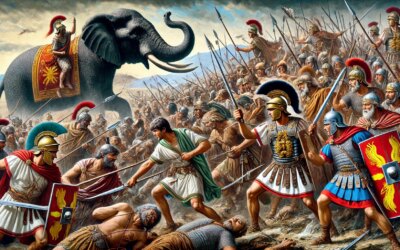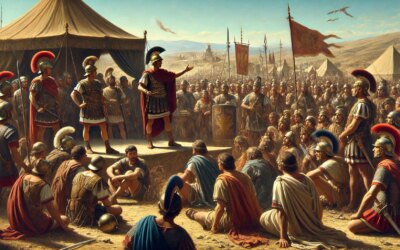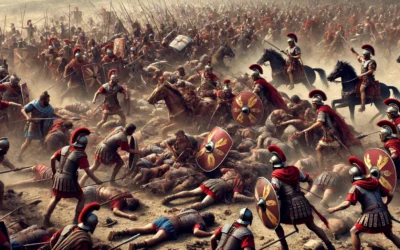Introduction: The Republic at a Crossroads
In 107 BC, the Roman Republic stood at a critical juncture. Beset by internal unrest, external threats, and an increasingly ineffective military, the Senate turned to an ambitious general named Gaius Marius. His solution would not just resolve an immediate crisis—it would fundamentally alter the structure of Rome’s military and, ultimately, its political destiny. The Marian Reforms were born from necessity, but they unleashed forces that would reshape the Republic and sow the seeds of empire.
Rome’s Military Crisis
By the late 2nd century BC, the Roman army relied on a property-based system: only citizens who met a minimum wealth threshold could serve as soldiers. As land ownership declined among the plebeians and Rome’s enemies grew bolder, the army struggled to field enough qualified men. Campaigns against Numidian king Jugurtha in North Africa and barbarian invasions from the north exposed these weaknesses.
Gaius Marius: Soldier and Statesman
Marius, a self-made man from Arpinum, had risen through military service and political ambition. As consul in 107 BC, he was given command of the war against Jugurtha after popular discontent overturned traditional Senate authority. Marius immediately sought to overhaul military recruitment, opening the ranks to the capite censi—the landless poor who had previously been excluded from service.
The Marian Reforms
Opening the Ranks
For the first time in Roman history, men without property could enlist in the legions. The state would provide armor, weapons, and training. This transformed the army from a citizen militia into a standing professional force. Service became a path to livelihood, loyalty, and eventually, land and rewards upon retirement.
Standardization and Cohesion
Marius introduced uniform training and equipment, including standardized javelins (pila), short swords (gladii), and rectangular shields. Cohorts replaced maniples as the core tactical unit, enhancing battlefield flexibility. Soldiers now carried their own gear, earning the nickname muli Mariani—“Marius’ mules.” Discipline and endurance became the hallmarks of the new Roman soldier.
Loyalty and Command
Most consequentially, these reforms redirected soldierly loyalty from the Senate to their generals. Veterans depended on their commanders for rewards and retirement land grants, establishing a dangerous precedent. While this bond created fierce, effective legions, it also laid the groundwork for civil wars and the rise of personal armies led by men like Sulla, Caesar, and Pompey.
Success in War
Marius’ new legions proved their worth quickly. He subdued Jugurtha and later repelled the invading Cimbri and Teutones in a series of dramatic victories. His popularity soared, and he was elected consul an unprecedented seven times. Though he later became embroiled in Rome’s internal power struggles, his military reforms outlived his political fortunes.
Long-Term Impact
The Marian Reforms permanently professionalized the Roman army. For the next four centuries, Rome’s military dominance rested on the foundation Marius built. However, the new army model also accelerated the decline of the Republic. With soldiers dependent on generals rather than the state, civil wars became frequent, and the Senate’s authority diminished. By the time of Augustus, the transformation from republic to empire was complete—paved by Marius’ legions.
Conclusion: The General Who Reshaped Rome
In 107 BC, Gaius Marius did not set out to end the Republic. Yet his military reforms, driven by necessity and ambition, initiated a new era of Roman warfare and politics. He gave Rome a powerful army—but also made generals more powerful than the Senate. In solving the crisis of his time, Marius unknowingly set the course for the rise of imperial Rome. His legacy, like his legions, marched beyond his control—but changed the world forever.






